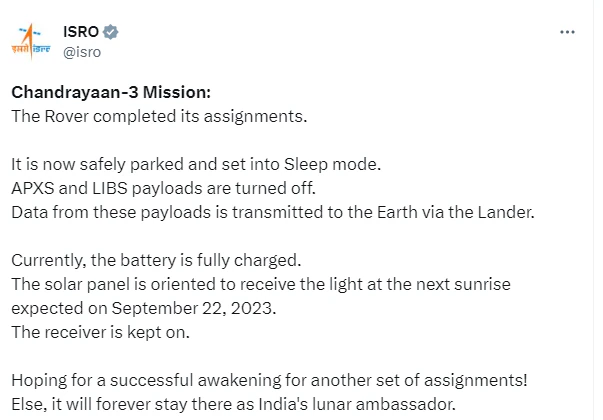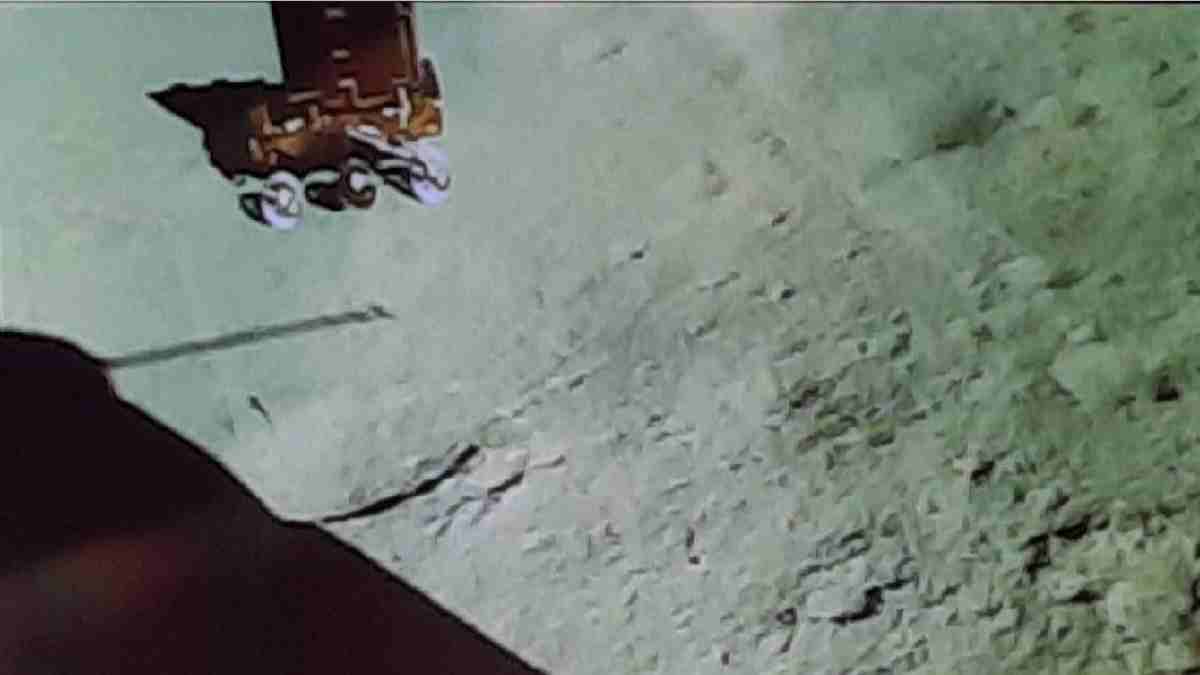New Delhi: In a good news to the nation, the Indian Space Research Organisation (ISRO) informed that the Pragyan rover on the Moon has been put to sleep. The space agency further revealed that it hoped to wake the rover up in 14 days.
The rover is equipped with two payloads, an Alpha Particle X-ray Spectrometer (APXS) and a Laser Induced Decomposition Spectrometer (LIBS). The payload transmitting data to Earth via the lander is disabled.
If the Pragyan rover does not undergo a “successful awakening”, it will forever remain on the moon as India’s lunar ambassador. The Pragyan rover and the Vikram lander are working in tandem to collect valuable scientific data.
What Do The Two Payloads Do?
The APXS and LIBS payloads are designed to analyze the elemental and mineral composition of lunar soils and rocks. The Pragyan probe is deployed to the Moon following the successful landing of the Vikram lander. It confirmed the presence of sulfur, iron, oxygen and other elements on the Moon.
Also Read: INDIA Creates History: Aditya-L1 Commences Journey To The Sun
What Does It Mean?
The rover’s 100-meter journey demonstrates ISRO’s ability to safely land and navigate the lunar surface. Chandrayaan-3 successfully landed on the lunar surface on August 23, 2023.
The mission made India the fourth country to achieve a soft landing on the lunar surface.
Aditya L-1 Mission
In the latest, India’s spaceport prepares for a major event as the country gears up for the launch of its pioneering solar-powered spaceflight mission, Aditya-L1. The countdown has begun and here’s everything you need to know about this extraordinary mission.
After years of constant preparation, hundreds of scientists tirelessly working for days and above all the ambition to successfully launch Aditya L-1, has led to the beginning of its journey to the sun.
Also Read: One Nation One Election: Union Govt Announces Committee, BIG Names In The List
Expectations for mission success were also accompanied by collective prayers across the country. The Indian spacecraft is expected to study the sun and hover at Lagrange Point, which will take nearly four years.

Pragyan rover













